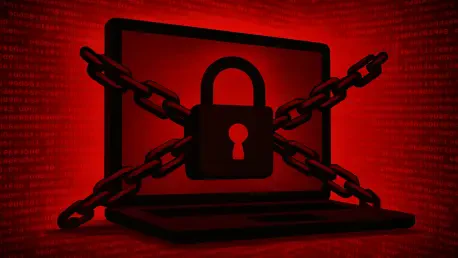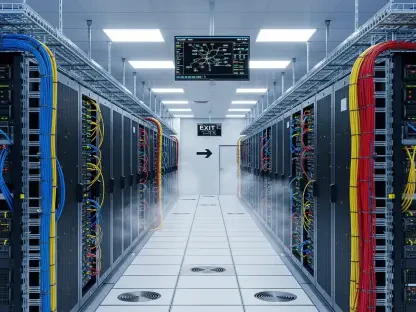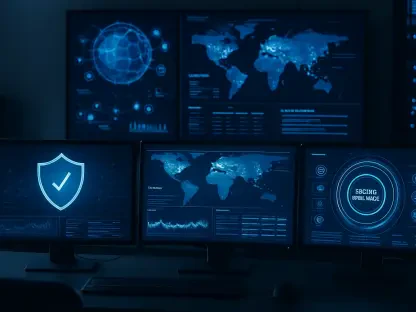The escalating ransomware threat poses a significant challenge to businesses worldwide, affecting operational stability and financial performance. A recent survey highlighted that 72% of companies faced ransomware incidents in the previous year, with an alarming average recovery cost of $4.5 million. This situation has generated intense apprehension among Chief Information Security Officers, as many recognize the capacity of these attacks to critically incapacitate business operations.
Current Landscape of Ransomware Threats
Ransomware attacks have become increasingly commonplace in recent years, leaving a trail of financial woe and operational disruption. Businesses targeted by such cyber threats often grapple with enormous recovery costs and the inevitable downtime that accompanies these incidents. The threat actors driving these attacks are continuously refining their techniques, creating an ever-evolving landscape of vulnerability for organizations. Despite involvement from entities like the US Cybersecurity and Infrastructure Security Agency and the UK National Cyber Security Centre, some firms continue paying ransoms, highlighting a divergence between advised and actual responses to these cyber threats.
Corporate victims often negotiate ransom fees with attackers, a tactic that half of organizations now employ to reduce financial exposure. This trend points to a troubling reliance on interfacing with cybercriminals instead of solely fortifying cyber defenses. Andy Ward’s advocacy for cyber resilience policies potently drives organizations to shift focus from mere prevention to comprehensive recovery protocols, including containment and restoration strategies.
Emerging Trends and Technologies in Cybersecurity
Evolution of Ransomware Tactics
February 2025 saw a record high of ransomware incidents, demonstrating the escalating sophistication and aggression of ransomware groups. Notable breaches like the Ingram Micro incident underline the need for enhanced defenses against rapidly evolving threats. The rise of groups such as SafePay exemplifies the refined approaches hackers adopt, revealing a complex and threatening landscape that demands vigilant monitoring and response from affected businesses.
Technological Innovations and Solutions
A crucial countermeasure to advanced ransomware threats lies in leveraging technological innovations and solutions. New tools designed for ransomware defense are emerging, providing opportunities for organizations to enhance their cybersecurity posture. Resilience technology plays a pivotal role, offering mechanisms for rapid recovery and malware containment, potentially preventing widespread system compromise. Businesses can capitalize on these advancements by integrating them into comprehensive cybersecurity strategies.
Challenges and Complexities in Combating Ransomware
Businesses face numerous obstacles in effectively combating ransomware, ranging from budgetary constraints to resource limitations. Despite intensifying concerns, the allocation toward cybersecurity often remains marginal, with many organizations dedicating only a small fraction of their overall IT budget to this crucial area. This budget limitation compounds the difficulty in developing robust preventive measures and comprehensive recovery plans.
Strategies to overcome these challenges include prioritizing resilience and recovery initiatives. By integrating robust planning and resilience protocols, businesses can better prepare for the eventuality of ransomware attacks, ensuring continuity and stability in operations. Embracing resilience measures facilitates a proactive approach in navigating the complexities of cyber threats.
Regulatory Environment and Compliance
The ongoing battle against ransomware is significantly influenced by the regulatory environment. New laws and regulatory changes shape the strategies businesses adopt in the fight against cybercrime. Compliance with these regulations provides a framework for improving cybersecurity measures, offering guidelines and standards that mitigate risks. The role of advisory bodies is pivotal in guiding organizations through compliance processes, ensuring adherence to security standards that bolster defenses against ransomware.
The Future of Ransomware and Cybersecurity
The ransomware threat continues to evolve, prompting businesses to adopt dynamic defense strategies. Future forecasts predict an intensification of cyber threats, driven by increasingly sophisticated tactics and innovative technologies. Potential disruptors in cybersecurity necessitate adaptive practices in both consumer and corporate security, focusing on advanced protection measures and proactive risk management.
Emerging trends in cybersecurity signal a shift toward resilience and innovation. Organizations must remain vigilant, anticipating changes and challenges in the landscape of cyber threats. Identifying key factors that influence future growth and resilience will be central to thriving amidst emerging vulnerabilities.
Conclusion and Strategic Recommendations
The multifaceted nature of ransomware threats demands an urgent and comprehensive response from businesses. By rethinking traditional responses and embracing resilience as a core strategy, organizations can enhance readiness against these threats. Strategic recommendations involve investment in resilience technology, planning robust recovery measures, and leveraging innovative cybersecurity tools for superior defense.
Companies can position themselves for growth by adopting proactive strategies and integrating technologies that support advanced threat protection. Areas ripe for investment include developing adaptive security practices and refining resilience protocols, ensuring preparedness for the evolving threats inherent in ransomware attacks.









